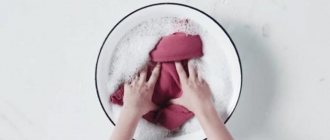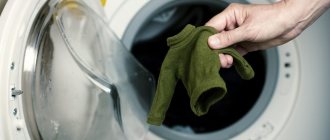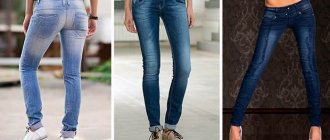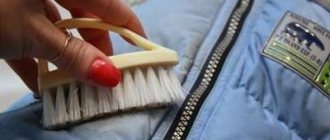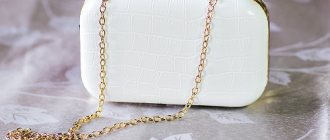The unpleasant situation when skate blades become covered with a coating of rust requires an immediate solution.
Rust not only looks unattractive, but also interferes with sliding. Ultimately, if nothing is done, the blades become unusable.
You can cope with plaque using special products and home recipes. We will tell you in this article how and how to remove rust from skate blades.
Folk remedies for combating corrosion on blades
Brown coating on skate blades is due to metal oxidation. Rusting is promoted by a humid environment with access to oxygen and improper care of products.
When using any of the cleaning methods, you must finally wipe all metal elements dry.
Soda and lemon
A recipe based on lemon juice and soda allows you to combine mechanical and chemical effects.
For cleaning you will need:
- sponge;
- lemon;
- soda.
Procedure:
- Squeeze juice from fresh lemon.
- Add enough soda to form a paste.
- Using a sponge, apply the resulting product to the metal.
- Rub with force.
- Rinse in water.
If the method does not help the first time, the procedure can be repeated.
Vinegar and flour
Exposure to acetic acid allows you to remove rust from skates. In order for the method to help, you must follow the instructions:
- combine a few tablespoons of flour with undiluted vinegar to form a paste;
- apply the composition to the blades;
- stand for 60 minutes;
- rinse with water.
Potatoes and salt
The chemical composition of raw potato tubers includes oxalic acid. When salt is added, the effect becomes complex and effective against corrosion.
Work order:
- wash and peel the potatoes;
- cut the tuber lengthwise into 2 parts;
- sprinkle salt on the cut;
- rub the blades with potatoes;
- wash off.
If the rusted area is relatively small and local, then you can proceed as follows:
- Prepare the potatoes in the same way as the previous method.
- Place the tuber, salted cut side down, on the stain.
- Leave for a quarter of an hour.
- Rinse and dry.
Soda
Baking soda can be used as a stand-alone rust remover. To do this, it is diluted to a thick paste with water and distributed over the blades.
After this, the skates are put aside for half an hour. At the end of the exposure time, wipe the runners with a rag, removing any remaining composition .
Aluminium foil
Food foil is suitable for the job. A fragment is cut from the roll and rolled into a ball. They need to actively move along the blades, removing darkened areas.
But this method is only suitable for small stains - it will not cope with significant rust damage.
Mechanical cleaning to restore original appearance
You can get rid of rust on tools mechanically. For this use:
- Hand brushes with metal bristles. They differ in the stiffness of the bristles and the way they are attached to the handle.
- Mechanical brushes with pneumatic drive. This method may seem easy to use at first glance, but working with automatic brushes is quite difficult, since you have to process small parts. During the procedure, a lot of fine metal dust is generated indoors, so the respiratory system must be protected with a respirator.
- Aluminum foil soaked in vinegar or other acid.
- Sandblasting machines. With their help, you can clean the tool in a few seconds. Moreover, the thickness of the corrosion does not matter.
Regardless of the selected device, the procedure does not change. General instructions for using the tools:
- Before cleaning, the tool must be securely fixed - the optimal setting for this purpose is a vice;
- The surface should be rubbed evenly, controlling the pressing force;
- movements should be circular;
- The stiffer the brush, the less time the procedure takes.
When working with any tool, your hands should be protected with gloves, and your face and eyes with a mask.
Special compositions: top 3
The action of special products is aimed at neutralizing rust. Preparations containing acids eliminate corrosion through a chemical reaction. When this reagent gets on damaged areas of the metal, it corrodes rust and stops the progression of the metal destruction process.
Anti-rust Neomid 570
This product, produced in Russia, combines effectiveness and safety for metal parts. In addition to metal, the product removes rusty deposits from:
- enameled surfaces,
- concrete,
- stone
Contains:
- corrosion inhibitor;
- solvent;
- complexing agent.
The product is available in concentrated form, requiring preliminary dilution with water in a ratio of 1:2. Work should be carried out at an air temperature of at least +5°C in a dry room, avoiding water getting into the treatment area.
The consumption of the product is very economical. A 1 liter container costs about 580 rubles. Available in various packaging.
Orthophosphoric acid
Phosphoric acid is an aggressive but very effective product that is produced by many manufacturers . The product is supplied to the retail chain in varying quantities.
Typically produced in a high concentration of aqueous solution, it appears as a clear liquid in the form of a suspension. Acid is used not only to remove rust, but also as a flux during soldering.
The average price for 500 ml is from 300 rubles, but you can also find the product in large volumes (several liters) and small ones, up to 100 ml. Read more about the use of phosphoric acid against rust in this article.
Transformer gel
Converters are produced by a large number of enterprises at home and abroad. This product allows you to restore the surface of the metal.
Contains:
- complexing agent;
- water;
- corrosion inhibitor;
- inorganic acids;
- rheological additive.
Means:
- eliminates damage without damaging the metal;
- provides surface protection from external moisture.
The price depends on the volume and manufacturer. For example, Bitumast gel converter costs about 140 rubles per bottle.
Cleaning knives with chemical reagents
Well, after trying some of the methods from popular recommendations, and if the result was not achieved, you can resort to the help of potent reagents. Most often, such methods are resorted to in case of severe corrosion damage.
These methods can also be called partly folk, but they can be quite effective. Such methods are much more aggressive and the result can be seen in a short period of time.
It is better to use them with rubber gloves and try not to inhale the fumes released. Let's try to describe three ways:
- Zinc chloride, potassium hydrogen tartrate. To perform this procedure, you will need 100 ml. water in which you need to dissolve 0.5 grams of potassium hydrogen tartrate and 5 grams of zinc chloride. When the reaction begins, lower the blade there and, as with the method using Alka Seltzer, wait for the reaction to complete, but in this case the knife will have to wait about 2-3 hours. Once the reaction is complete, remove the wedge and wipe dry with a cloth.
- Hydrochloric acid. When using such strong acids, by the way, instead of hydrochloric acid, you can use sulfuric acid. You need to be especially careful and attentive; special inhibitors are used with them to reduce the destructive effect on the metal. Otherwise, the blade will “eat” up to the hilt. The solution should be 5% acid and methenamine (0.5 grams per liter). Then the knife is treated with a brush or rag well soaked in this mixture.
- Alka seltzer. The drug for headaches after a stormy feast turns out to have other useful chemical properties. You will need 5 tablets of this drug. We lower them into the container, and then fill them with water, dip the rusty blade into it and keep it there until bubbles appear. As soon as the boiling process is over, remove it and remove any remaining dirt with a soft cloth.
Removing rust from a knife using chemicals.
Working with such chemical compounds yourself can be dangerous. It is unknown what reaction can occur if the proportions are mixed incorrectly. And where to get some of the reagents, you may not be able to find them in the public domain.
For this, various manufacturers of household chemicals have developed a whole line of rust removers.
Sanding and polishing
Cleaning up skate blades involves more than just homemade recipes and store-bought products. Purely mechanical processing should not be ignored.
This impact includes the following actions:
- Elimination of surface corrosion.
- Grinding.
- Alignment of burrs.
- Sharpening.
- Polishing.
Events can be carried out in two ways:
- On the machines.
- Manually, using additional objects with an abrasive surface.
It should be borne in mind that mechanical removal of the top layer must be supplemented with polishing, designed to prevent the spread of corrosion into the deeper layers of the metal.
Polishing is necessary to achieve the following goals:
- elimination of all roughness, even those that are almost invisible;
- creating a protective layer by getting polishing compounds into the scratches.
Polishing should be carried out at the last stage:
- Cleaning metal parts from contamination.
- Drying.
- Removing rust.
- Polish for 5 minutes.
Compositions that are suitable for polishing:
- purchased pastes (Doctor Wax, Grobet, etc.);
- machine oil;
- petrolatum.
In addition to those listed, ointments and gels that are sold in sporting goods and are intended for polishing metal can be used.
Method 6. Stain remover
Before you begin removing stains, you should carefully read the instructions for using this product (it will be difficult to undo a mistake). Usually it is enough to apply a small amount of concentrate to the dirty area and let it soak in (10 minutes, some manufacturers recommend 15). Next, wipe the contaminated area with a clean cloth until the stain disappears. If necessary, repeat the procedure. The cleaned item can be machine washed.
Here are stain removers that will help you remove old rust stains. You can remove rust from colored clothes:
- "Vanish";
- Amway;
- "Ace";
- "Sarma";
- "Oxy";
- "Antipyatin."
Recommendations
To prevent skates from suffering from corrosion, it is necessary to carry out preventive care for them and follow the advice of experts:
- At the first signs of rusting, measures should be taken to eliminate corrosion, without allowing the situation to worsen.
- Cleaning should begin with the removal of contaminants, and only then proceed to the fight against corrosion.
- Chemicals should be used with good ventilation, away from heat sources and open flames.
When working with reagents, you should wear protective gloves.- When using purchased products to eliminate corrosion, you must first study the instructions on the package.
- It is advisable to store boots with skates in fabric bags (each separately).
- For runners, special covers and covers (plastic or rubber) should be used for the storage period.
- It is advisable to compact the paper tightly inside the boots themselves for the duration of storage.
- For skates that are used only during the season, it is advisable to carry out a preventive inspection of sports equipment in advance.
- If any malfunctions of the skates are detected, the problems must be corrected as soon as possible. This will prevent their damage and failure.
- Sharpening should be timely, without extremes. Frequent use will lead to rapid wear, and infrequent use will make sliding difficult.
- With prolonged use, the fastening of the blades weakens and needs to be tightened.
You cannot skate on skates whose blades are rusty. Impaired gliding may result in poor ride quality and possible falls.
How to store skates
Storage conditions for winter equipment:
- It is recommended to store figure skating boots in fabric bags;
- It is advisable to pack the skates not together, but each shoe separately;
- covers made of absorbent fabric are also provided for metal runners;
- instead of soft cotton fabric, it is allowed to use paper;
- You can stuff newspaper inside the boots - this will help rid the inside of moisture;
- there are special pads for blades (rubber or plastic);
- plastic pads are used to prevent blades from becoming dull when moving on concrete, tiles, or other hard surfaces (they must be removed on ice);
- rubber linings are used for carrying and for summer storage;
- upon completion of use of the equipment, it must be dried;
- all parts of the skates need to be lubricated (boots with leather cream, runners with protective paste for metal);
- if cracks, creases, or other faults are found on the surface, it is better to immediately repair the equipment without waiting for the season;
- It is recommended to place the skates in a dark and dry place that protects them from direct exposure to the sun.
To avoid having to waste time on emergency preparation of skates in the coming winter season, you need to take into account all preventive measures in advance. Only with a serious approach to the operation, maintenance, repair and storage of this equipment can you count on its use for many, many years.
Fastener Maintenance
The skate runners are connected to the boot soles with screws. During the operation of the equipment, such fasteners will certainly weaken and become loose. To avoid problems while riding, the screws should be tightened periodically. You shouldn't twist them too tightly. After all, if you overdo it, you can cause delamination of the sole. The screws must be tightened tightly enough to ensure a secure connection between the runners and the sole. Regular maintenance of the fasteners will help avoid accidental injuries while riding.
The process of removing rust from metal at home.
After cleaning the metal objects from loose rust with a brush, I placed them in a plastic tray. It took 2.5 liters of water to cover them completely. For this amount I poured 200 grams of lemon. Then I stirred it until completely dissolved, immersed our “test subjects” again and left the solution to “work.” I placed the second sleeve vertically specifically so that later I could show the result as in a toothpaste advertisement: “we will spread the right side of the egg with regular toothpaste, and the left side .....”))).
The citric acid solution gradually eats away the rust layer by layer. To ensure access of the acid to subsequent layers, after 2-3 hours I take out all the objects and clean off the corroded layers with a wire brush. It takes no more than 5 minutes, but the result is much better. Then every hour I repeat this procedure 3-4 more times. The photo shows cleaning the ax after 2 hours in the solution. As you can see, the effect of the solution for removing rust from metal is already visible to the naked eye.
It is necessary to clean off the corroded layer only for deeply ingrained rust. The key lay in the open air for several months, so the rust did not have time to eat as deeply as into the ax or the sleeve. It only took him 2 hours to completely get rid of the rust. The result can be seen in the photo. I took out the key, and the rest of the items continued to lie in the solution.
After a day, the transparent solution accumulated a large amount of corroded rust and became very cloudy. Now we clean all the items again with a metal brush from rust residues, wash them in a solution and look at the result.
Loctite
The Loctite helium converter is very popular among avid hunters. It removes rust quickly without damaging the varnish.
If the rust has managed to eat in and form “sinks” in the body of the knife, you should forget about preserving the varnish coating. “Sinks” are cleaned mechanically, using a grinding machine or sandpaper.
To clean carbon steel and stainless steel knives, CIF cleaning gel or spray is excellent. The traditional use of the product is to combat heat-treated dirt or limescale. Rust on a knife is also affected by the components included in its composition.
Apply the spray to the surface of the blade and wipe off the knife, along with the loose flakes of rust, with a coarse cloth. Cover the blade with a 0.5 mm layer of gel using a toothbrush and rub into the surface. Remove with a dry cloth after 10 minutes. Polish with oiled flannel.
Newly discovered rust, often in the form of dots, can be easily removed with ash from a fire. Very convenient in hiking conditions.
Dilute the ash with a few drops of water and rub the blade. You can just use your fingers. Wipe the knife with a dry cloth.



